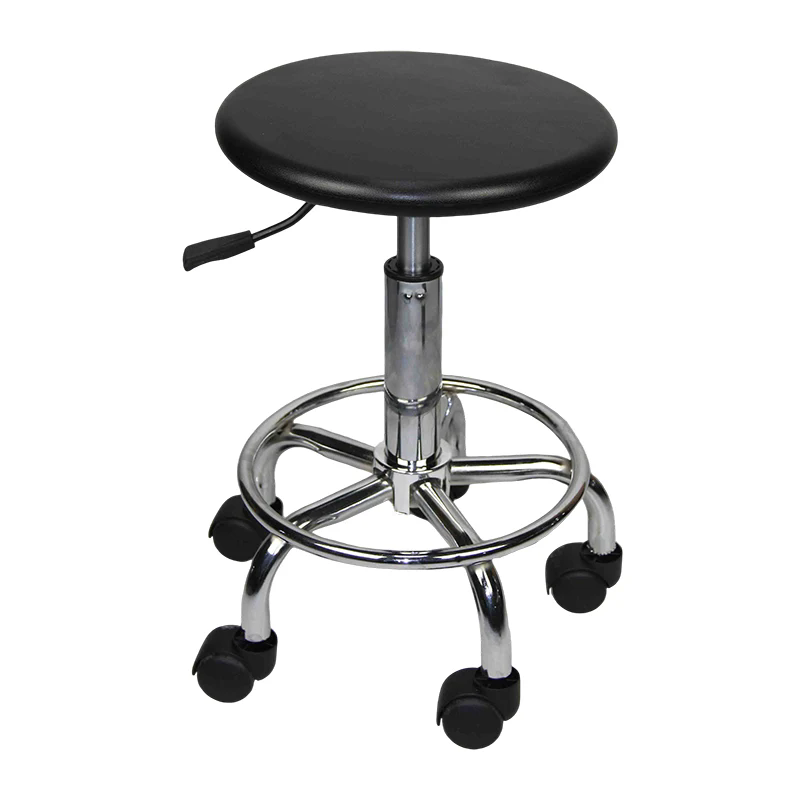Why Are ESD Chairs Becoming the Standard for Modern Workspaces?
2025-10-15
In industries where static electricity poses a risk—such as electronics manufacturing, laboratories, cleanrooms, and precision assembly—ESD Chairs play a critical role in maintaining product quality, worker safety, and operational efficiency. Unlike traditional seating, an ESD chair is specifically designed to dissipate static electricity from the operator’s body through the chair, the flooring, and ultimately to a safe grounding point. This helps prevent electrostatic damage to sensitive electronic components that can lead to product defects, data loss, or costly equipment failure.
The rising demand for ESD-safe environments has made ESD furniture a vital investment for modern industries pursuing high precision and ISO-standard safety compliance. As more workplaces transition to automation and cleanroom technology, the ESD chair is no longer an accessory but a core component of the static control system.
Below is a detailed technical overview of typical ESD Chair specifications that define professional-grade performance and reliability:
| Parameter | Specification |
|---|---|
| Seat Material | Conductive or static-dissipative PU leather / Vinyl / Fabric |
| Resistance Range | 10⁶ – 10⁹ Ω (meets ANSI/ESD S20.20 standards) |
| Base Material | Chrome-plated steel or conductive nylon with ESD casters |
| Height Adjustment | Pneumatic lift system (450–650 mm or customized) |
| Backrest Adjustment | Ergonomic tilt with lumbar support |
| ESD Grounding | Built-in conductive chain or grounding strap |
| Load Capacity | 120–150 kg |
| Seat Cushion Density | 45–55 kg/m³ high-resilience foam |
| Optional Features | Armrests, foot ring, anti-fatigue design, cleanroom compatibility |
Why Are ESD Chairs Essential in Static-Sensitive Environments?
Electrostatic discharge, although invisible, can cause catastrophic consequences in sensitive production lines. A single spark as low as 30 volts can destroy microelectronic circuits, yet humans cannot feel static below 3,000 volts. This invisible threat is why industries have turned to ESD-safe equipment to mitigate risks and ensure reliability.
An ESD chair functions as a primary control point in the ESD protection system. When a worker sits, the chair equalizes electrical potential by conducting static charges through the chair’s material, down the conductive casters, and into a grounded floor system. Without this controlled dissipation, static energy can accumulate and discharge unpredictably, damaging products or triggering malfunctions.
Key benefits of using ESD chairs include:
-
Enhanced Product Safety – Reduces risk of static damage to semiconductors, printed circuit boards, and sensors.
-
Improved Worker Health – Ergonomic designs prevent back strain and muscle fatigue during long working hours.
-
Compliance Assurance – Meets international ESD protection standards such as ANSI/ESD S20.20 and IEC 61340.
-
Cost Reduction – Prevents ESD-related product failure, rework, and customer returns.
-
Cleanroom Compatibility – Specialized versions minimize dust and particle emission.
By investing in certified ESD seating, companies achieve both static control and ergonomic comfort, enhancing overall productivity and safety compliance.
How to Choose the Right ESD Chair for Your Facility?
Selecting an appropriate ESD chair depends on the working environment, frequency of use, and ESD performance requirements. There are several critical factors to consider:
-
Material Conductivity
The seat and backrest materials must maintain consistent resistance between 10⁶ and 10⁹ ohms. PU leather and vinyl are commonly used for cleanrooms, while conductive fabric suits general assembly areas. -
Grounding Path Integrity
Verify that the chair includes a tested conductive chain or grounding strap that provides a continuous path from the user to the flooring system. Regular maintenance and testing should be scheduled to ensure proper grounding. -
Floor Type Compatibility
ESD chairs work best with conductive flooring or mats. If used on standard flooring, ensure additional grounding accessories are installed to maintain effective dissipation. -
Ergonomics and Comfort
Long working hours demand adjustable seat height, tilt, and lumbar support. Ergonomically designed ESD chairs reduce fatigue and enhance concentration. -
Durability and Maintenance
Choose chairs with anti-scratch bases, corrosion-resistant components, and high-density cushioning. Materials like chrome-plated steel and reinforced nylon ensure long service life in industrial conditions. -
Certifications and Standards
Reputable ESD chairs should comply with ANSI/ESD S20.20, IEC 61340-5-1, and ISO 14644 for cleanroom applications. Certifications provide assurance of both electrical safety and quality construction.
What Does the Future Hold for ESD Seating Solutions?
With the rapid growth of semiconductor manufacturing, aerospace engineering, and high-precision electronics, the future of ESD chairs is moving toward smarter, more adaptive designs. Several key trends are shaping this evolution:
-
Smart Monitoring Systems
Advanced ESD chairs are being integrated with real-time static monitoring sensors that detect and record resistance levels, providing immediate alerts if grounding is compromised. -
Eco-Friendly Materials
Manufacturers are adopting sustainable conductive materials and recyclable components to meet environmental standards and reduce carbon footprints. -
Enhanced Ergonomics through AI Design
The next generation of chairs utilizes 3D scanning and AI-assisted design to tailor ergonomics for different body types, improving posture and productivity. -
Modular Configurations
Modular ESD seating systems allow customization for various workstation layouts, from single-operator benches to large-scale cleanroom environments. -
Hybrid Static-Control Systems
Integration between ESD chairs, flooring, and wrist straps is being refined into unified grounding systems that automatically balance static charge for multiple operators simultaneously. -
Global Standardization
With the increasing need for international compliance, ESD seating manufacturers are aligning designs to meet cross-border standards, ensuring universal safety and compatibility.
In this evolving landscape, companies adopting advanced ESD solutions not only protect their assets but also demonstrate commitment to quality and innovation. As industrial environments become smarter and more interconnected, ESD protection will continue to form the backbone of reliability and safety assurance.
FAQs About ESD Chairs
Q1: How often should an ESD chair be tested for grounding effectiveness?
A: ESD chairs should be tested every 6 to 12 months, depending on usage intensity and environment. Frequent use in high-humidity or high-traffic areas can degrade conductive materials faster. Use an ESD tester to measure resistance between the chair, caster, and floor. If readings exceed 10⁹ ohms, grounding accessories should be replaced.
Q2: Can a normal chair be converted into an ESD chair?
A: Technically, standard chairs can be modified by adding conductive casters or grounding straps, but this does not guarantee full compliance. ESD chairs are engineered with integrated conductive materials from the core structure outward, ensuring consistent resistance and safety. For professional environments, it is recommended to use certified ESD chairs designed specifically for static control applications.
Why Xinlida ESD Chairs Define Industry Excellence
As static-sensitive industries continue to expand, ESD chairs have become indispensable for maintaining both safety and productivity. Their precision-engineered design protects electronic components, improves worker comfort, and ensures compliance with international safety standards.
Among the leading manufacturers, Xinlida has established itself as a trusted brand delivering high-performance ESD solutions. Each Xinlida ESD Chair is crafted using premium conductive materials, rigorous quality testing, and ergonomic engineering tailored to the evolving needs of industrial professionals.
Whether for an electronics assembly line, laboratory, or cleanroom facility, Xinlida offers ESD chairs that combine static protection, durability, and comfort—ensuring a reliable and safe working environment.
For consultation or inquiries about product specifications and customization, contact us today to discover how Xinlida ESD Chairs can enhance your static control strategy and workplace efficiency.



